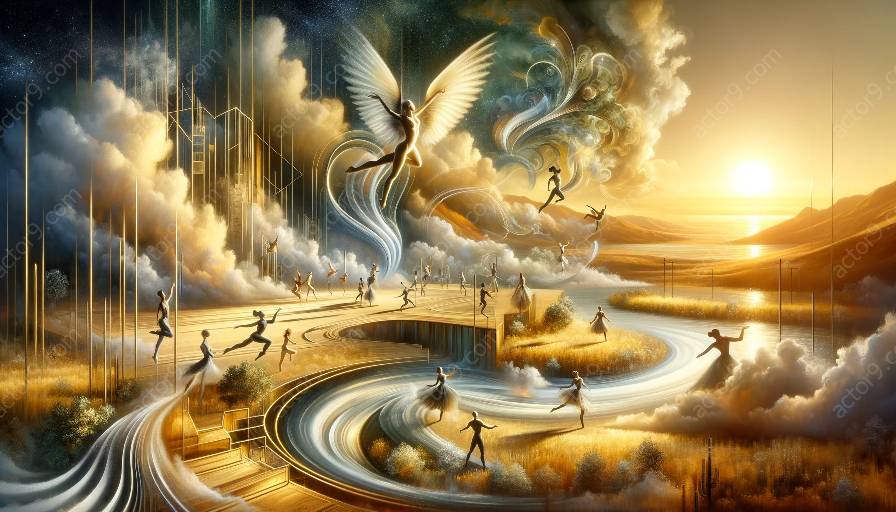Physical theatre and circus arts are two distinct forms of performance art, each with its own unique approach to the use of space. Understanding the differences and intersections between these two art forms can provide valuable insights for actors, directors, and performers.
Differences in the Use of Space
Physical theatre often emphasizes the use of the entire performance space to convey emotions, narratives, and themes. Performers in physical theatre productions frequently use expansive movements and dynamic spatial relationships to engage the audience and create immersive experiences.
On the other hand, circus arts performers utilize space in a more three-dimensional and acrobatic manner. They often rely on aerial and ground-level apparatus, such as trapezes, hoops, and ropes, to showcase their skills and agility. The use of vertical space is a key feature of circus arts, allowing performers to defy gravity and create visually stunning spectacles.
Intersections of Physical Theatre and Circus Arts
Despite their differences, physical theatre and circus arts intersect in their shared focus on physicality and movement. Both art forms incorporate elements of dance, athleticism, and spatial awareness to captivate audiences and convey stories through non-verbal means.
In recent years, there has been a growing trend towards blending physical theatre techniques with circus arts disciplines. This fusion has resulted in innovative performances that combine the narrative depth of physical theatre with the awe-inspiring physical feats of circus arts. These hybrid productions often push the boundaries of traditional performance spaces and challenge audiences' perceptions of what is possible on stage.
Impact on Performers and Audiences
The use of space in physical theatre and circus arts has a profound impact on both performers and audiences. For actors and circus artists, mastering spatial awareness and movement in relation to the performance space is essential for creating compelling and visually captivating work.
Audiences, in turn, are transported into imaginative worlds where the boundaries of physical possibility are expanded. The use of space in these performances can evoke a sense of wonder, excitement, and emotional resonance, leaving a lasting impression on those who experience these dynamic art forms.
Conclusion
Understanding the differences and intersections in the use of space between physical theatre and circus arts performances provides valuable insights into the artistry and innovation of these performance disciplines. By blending the strengths of both forms, performers and creators can continue to push the boundaries of what is possible in the realm of immersive, physical storytelling.




































